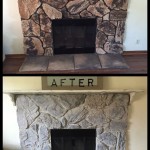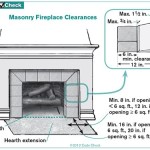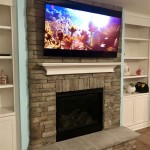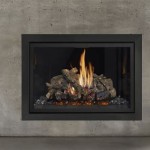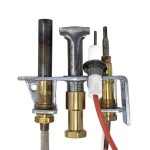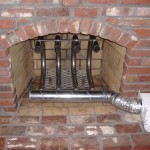Energy Saving Electric Fireplaces: A Comprehensive Guide
Electric fireplaces have risen in popularity as a convenient and aesthetically pleasing alternative to traditional wood-burning fireplaces. Beyond their ease of installation and lack of mess, a key factor driving their adoption is the potential for energy savings. This article delves into the energy efficiency aspects of electric fireplaces, examining how they operate, their energy consumption compared to other heating methods, and strategies for maximizing energy savings.
An electric fireplace operates by using electricity to heat a metal coil or ceramic plate, which then radiates heat into the surrounding room. Many models incorporate a fan to circulate the warm air, distributing it more evenly throughout the space. The visual flame effect, often achieved through LED lights and reflective surfaces, is independent of the heating function, allowing individuals to enjoy the ambiance without consuming energy for heat generation.
Unlike gas or wood-burning fireplaces, electric fireplaces do not require venting, eliminating heat loss through a chimney. This makes them inherently more efficient in terms of heat retention. Additionally, thermostats in electric fireplaces can maintain a consistent temperature, preventing overheating and wasted energy. The ability to control the heating output and flame effect separately further enhances their energy-saving potential.
Understanding Energy Consumption
The energy consumption of an electric fireplace is typically measured in watts or kilowatts. A standard electric fireplace might range from 1,000 to 1,500 watts when operating at full heat. To calculate the hourly operating cost, one can multiply the wattage by the local electricity rate (expressed in kilowatt-hours, kWh). For example, a 1,500-watt heater operating for one hour would consume 1.5 kWh. If the electricity rate is $0.15 per kWh, the cost to operate the fireplace for that hour would be $0.225.
It is important to note that the actual energy consumption can vary depending on several factors, including the size of the room being heated, the desired temperature, the insulation of the room, and the specific settings used on the fireplace. Lower heat settings will obviously consume less energy. Some models also offer a "flame only" setting, which allows individuals to enjoy the visual appeal without any heat generation, further reducing energy consumption.
Comparing electric fireplaces to other heating methods reveals their relative energy efficiency. Central heating systems, whether gas or electric, heat an entire house, even if only one room is occupied. Electric fireplaces, on the other hand, can provide supplemental heat to a specific area, allowing individuals to lower the thermostat for the entire house and save energy by only heating the room they are using. Portable electric space heaters offer a similar localized heating option, but they often lack the aesthetic appeal and features of an electric fireplace, such as adjustable flame effects and thermostat control.
When compared to traditional wood-burning fireplaces, electric fireplaces offer a significant advantage in terms of energy efficiency. Wood-burning fireplaces are notoriously inefficient, with a large portion of the heat escaping through the chimney. According to the Environmental Protection Agency (EPA), wood stoves and fireplaces are often only 10-20% efficient, meaning that 80-90% of the heat generated is lost. Electric fireplaces, by contrast, are nearly 100% efficient, converting almost all the electrical energy into heat.
Maximizing Energy Savings with Electric Fireplaces
To maximize the energy-saving potential of an electric fireplace, several strategies can be employed. Proper placement of the fireplace can improve its heating efficiency. Positioning the fireplace in a central location within the room allows for better heat distribution. Avoid placing it near drafty windows or doors, as this can lead to heat loss and increased energy consumption.
The thermostat setting plays a crucial role in energy conservation. Setting the thermostat to a comfortable but not excessive temperature can prevent overheating and wasted energy. Some electric fireplaces feature programmable thermostats, which allow individuals to set different temperatures for different times of the day. This can be particularly useful for reducing energy consumption when no one is home or during sleeping hours.
Using the electric fireplace as a supplemental heating source rather than relying solely on central heating can lead to significant energy savings. By heating only the room being occupied, individuals can lower the thermostat for the entire house, reducing the overall energy consumption. This approach is particularly effective in homes with multiple rooms or in areas where only one room is frequently used.
Regular maintenance can also contribute to the energy efficiency of an electric fireplace. Cleaning the heating element and fan can ensure optimal performance and prevent overheating. Dust and debris can accumulate over time, reducing the efficiency of the heating process. Following the manufacturer's instructions for cleaning and maintenance can prolong the lifespan of the fireplace and ensure its continued energy efficiency.
Key Features of Energy-Efficient Electric Fireplaces
Modern electric fireplaces often incorporate features specifically designed to enhance energy efficiency. LED lighting is a common feature, offering a bright and realistic flame effect while consuming minimal energy. LEDs are significantly more energy-efficient than traditional incandescent or halogen bulbs, reducing the overall energy consumption of the fireplace.
Zoned heating is another feature that can contribute to energy savings. Some electric fireplaces offer the ability to control the heat output to different areas of the room. This allows individuals to focus the heat where it is needed most, reducing energy waste in unoccupied areas. Zoned heating can be particularly beneficial in larger rooms or open-concept spaces.
Smart technology integration is becoming increasingly common in electric fireplaces. Wi-Fi connectivity and smartphone apps allow individuals to control the fireplace remotely, adjusting the temperature, flame effect, and timer settings from anywhere with an internet connection. This can be particularly useful for preheating a room before arrival or turning off the fireplace remotely if it has been left on accidentally. Smart features can also provide insights into energy consumption patterns, allowing individuals to make informed decisions about their heating habits.
The size of the electric fireplace should also be considered in relation to the room size. Using an oversized fireplace in a small room can lead to overheating and wasted energy. Conversely, using an undersized fireplace in a large room may not provide adequate heating, requiring the unit to operate at full power for extended periods. Selecting a fireplace that is appropriately sized for the room can optimize its heating efficiency and minimize energy consumption.
In summary, electric fireplaces offer a potentially energy-efficient heating solution compared to traditional wood-burning fireplaces and, in some cases, central heating systems. By understanding their energy consumption, employing strategies to maximize energy savings, and selecting models with energy-efficient features, individuals can enjoy the ambiance and warmth of an electric fireplace while minimizing their environmental impact and reducing their energy bills. The key is to use them wisely, focusing on supplemental heating and taking advantage of the controllable features available in modern units.

Are Electric Fireplaces Energy Efficient We Love Fire

Are Electric Fireplaces Energy Efficient Direct Learning Center

ᑕ❶ᑐ Energy Efficient Electric Fireplaces For Your Home

Clihome 36 In W Black Led Electric Fireplace The Fireplaces Department At Com

Are Electric Fireplaces Energy Efficient

Energy Efficiency Benefits Of Purchasing An Electric Fireplace Uintah Fireplaces

Are Electric Fireplaces Energy Efficient We Love Fire

White Electric Fireplaces Heater Wall Fireplace Insert Energy Saving Remote Control China Heaters Made In Com

Clihome 60 In W Black Fan Forced Electric Fireplace The Fireplaces Department At Com

Your Guide To Selecting An Energy Efficient Electric Fireplace Dreifuss Fireplaces
Related Posts


